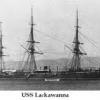-
Posts
6,381 -
Joined
-
Last visited
Content Type
Profiles
Forums
Gallery
Events
Everything posted by Canute
-

1931 Cadillac by CDW - FINISHED - JoHan - 1:25 Scale - PLASTIC
Canute replied to CDW's topic in Non-ship/categorised builds
You can sometimes use 90% isopropel alcohol to remove paint and decals. But it all depends on the paint, too. Different paints react differently. Best bet is to try it out on a test piece. -
EG, nice work. Don't forget Archer Transfers for some of your details, such as those louvers. https://www.archertransfers.com/index.html You can go into the model rail section for the louvers. https://www.archertransfers.com/SurfaceDetailsHOscale.html I know it says HO scale, but the resin decals show lengths in actual dimensions.
-
We had a crew warp the barrels of a 20MM Vulcan Gatling gun in an F-4. Two second burst was the max time per trigger pull per tech orders. These guys got too heavy on that. Don't know how long, but the barrels had some weird twists to them. Yeah, the rubber treads look good, but they do have a shelf life. May need some aftermarket treads?
-

B-25J Mitchell by Tom E - Revell - 1:48 Scale - PLASTIC
Canute replied to Tom E's topic in Non-ship/categorised builds
Tom, you can never have too much ammo for those bomber gunners. The yellow ring around the nose is pretty much a US standard for live ordnance. We still use that on free fall and precision guided weapons. The fuses (little propellers on the noses) are a metallic aluminum. Old USAF weapons officer and I did this stuff for 20 years. Hope this helps. -
Andy, nice job with the vestibule and roof. The roof ends are some of the toughest sections to get correct, if done from scratch. Well done. The Kadees are a great idea, since they are more "scale". Making up into a beauty. That heavy line could also be used as the brake air line, too. Looks like they are on the correct side for the air line. If they have Baker stoves, they wouldn't be steam heating. Check the DRG&W wood coaches; they're of a similar vintage. I know they used Baker stoves.
-

Bell UH-1H Huey By lmagna - Dragon - 1/35 - PLASTIC
Canute replied to lmagna's topic in Non-ship/categorised builds
I suspect your photo is closer to the reality of the day. Our a/c had a medium gray cockpit with black instrument panels. The round gauges had color marks for good and bad ranges. The radio and computer panels were generally scuffed, because so many feet got in there in the course of doing maintenance. The canopy rails were black, always good in SEA. Rest your arms on them and risk getting burned. Typical of many fighters. -
Well, it's pretty darn close, Mark. Maybe more like a kit-bash. The kit supplies sticks, tubing, wire, cordage and a handful of lead/pewter castings. Somewhere a lot of kit wood walked and I ended up acquiring a lot of replacement packs. Been pulling dimensions from the plans for the deck house. I'm gonna replace the provided wood sticks for the house siding with some Evergreen Novelty siding. Sometimes called ship-lap siding. The marine equipment of many of the NY harbor railroads used the stuff on their craft. Puzzling over the windows and doors. May replace the sticks with some plastic castings that actually look like windows and doors. In this scale , I'm wondering if cutting the 2" x 6" planking into 24' lengths would be worth the effort; too small to see the difference
-
Excellent job.👍 And it'd be a sin to waste that fine Irish whiskey.
- 648 replies
-
- niagara
- model shipways
-
(and 1 more)
Tagged with:
-
EG, I like the icy roads theme. My Dad wad a 3rd Army MP directing the armor north from Metz, in France, toward Bastogne. I wandered that area when I was stationed there. Heavily wooded, some old stone bridges and a high crown on the road. Yeah, they would have slid off into the ditches. Brr, just thinking about that. Got any jalapenos for those nachoes? 😁🤣
About us
Modelshipworld - Advancing Ship Modeling through Research
SSL Secured
Your security is important for us so this Website is SSL-Secured
NRG Mailing Address
Nautical Research Guild
237 South Lincoln Street
Westmont IL, 60559-1917
Model Ship World ® and the MSW logo are Registered Trademarks, and belong to the Nautical Research Guild (United States Patent and Trademark Office: No. 6,929,264 & No. 6,929,274, registered Dec. 20, 2022)
Helpful Links
About the NRG
If you enjoy building ship models that are historically accurate as well as beautiful, then The Nautical Research Guild (NRG) is just right for you.
The Guild is a non-profit educational organization whose mission is to “Advance Ship Modeling Through Research”. We provide support to our members in their efforts to raise the quality of their model ships.
The Nautical Research Guild has published our world-renowned quarterly magazine, The Nautical Research Journal, since 1955. The pages of the Journal are full of articles by accomplished ship modelers who show you how they create those exquisite details on their models, and by maritime historians who show you the correct details to build. The Journal is available in both print and digital editions. Go to the NRG web site (www.thenrg.org) to download a complimentary digital copy of the Journal. The NRG also publishes plan sets, books and compilations of back issues of the Journal and the former Ships in Scale and Model Ship Builder magazines.


